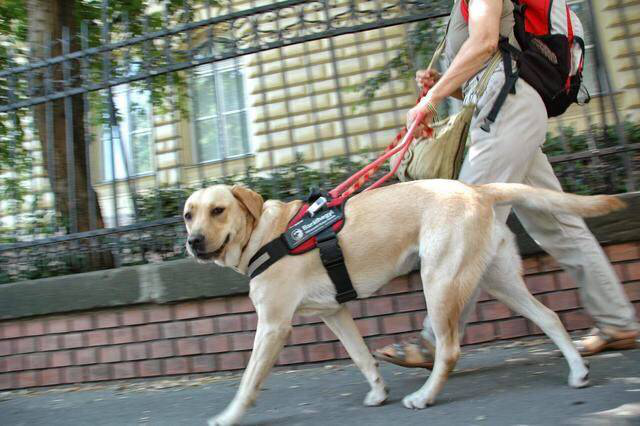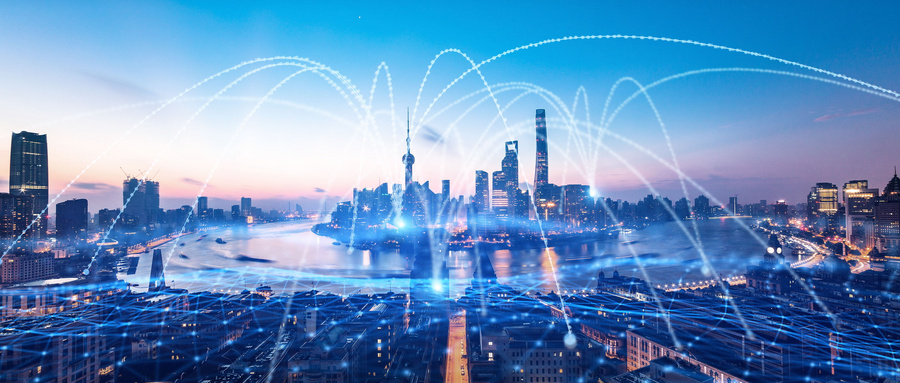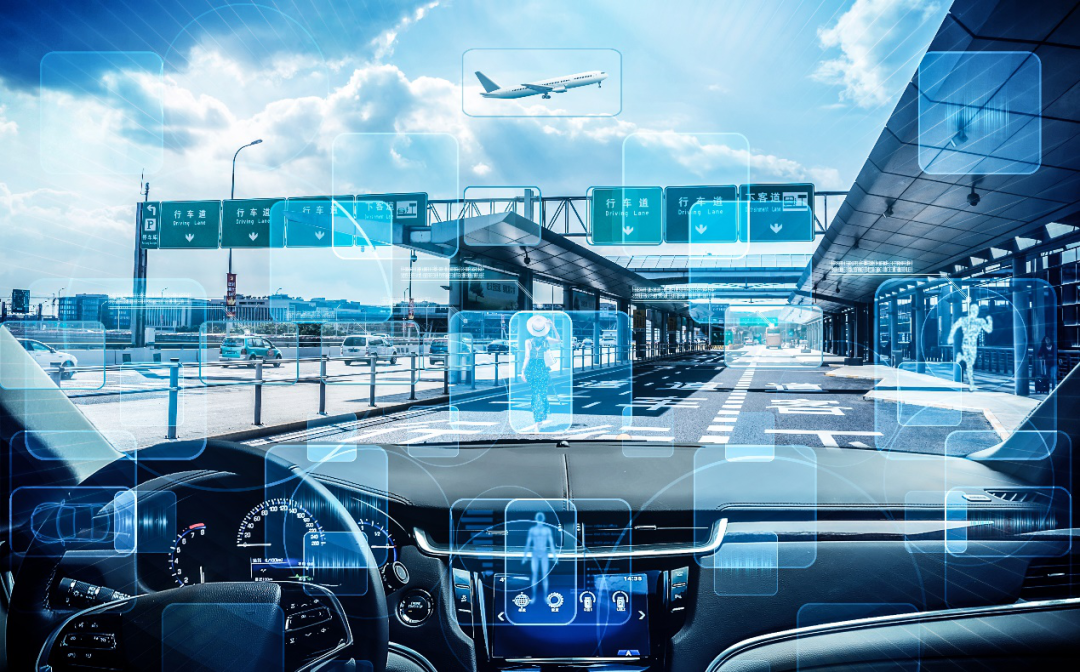

Friends who often surf the internet must know that many cities’ public transportation systems have recently begun to gradually accept guide dogs.
A widely circulated statistic is that as of 2017, there were only 116 guide dogs in the country, which is rarer than giant pandas, while the number of blind people needing guide dog services is around 8 million.
The series of high difficulties and costs involved in breeding, training, internship, and employment determines that guide dogs are a “luxury” for blind people’s travel. Each guide dog costs between 120,000 to 150,000 yuan and has a lifespan of only a few years. Even if one is fortunate enough to get a guide dog, what should visually impaired individuals do when it retires? This is a topic that deserves continuous reflection and improvement in a civilized society, even after the trending discussions fade away.

Recently, a blind man from Turkey, Kürşat Ceylan, has attracted our attention for creating an AI cane based on the latest Arm processors and NPUs, which may open a window for more visually impaired individuals.
So, what technical conditions are required for AI to help visually impaired individuals integrate into public life safely and sustainably?
AI Cane: It’s Quite Challenging to Compete with Guide Dogs
Can AI + cane help blind people travel smoothly? We can speculate based on several important capabilities of guide dogs.
First, guide dogs need to accurately identify obstacles.
This includes avoiding large pits, cars, pedestrians, railings, etc., as well as recognizing key traffic information such as traffic lights to ensure blind people can travel smoothly. Those familiar with AI know that detecting environmental obstacles based on machine vision + cameras + sensors is not difficult. Therefore, in the AI cane, Kürşat Ceylan has integrated map navigation, obstacle detection algorithms, LED warning lights, microphones, etc., into the traditional cane, which can successfully sense obstacles up to 160 cm high using ultrasonic detectors.

At the same time, guide dogs also need to lead blind people safely around obstacles.
When performing their tasks, guide dogs wear vests with pull straps to guide their owners on when to walk or stop. Moreover, guide dogs can make judgments based on real-time information and sometimes even “intelligently disobey”; when they find that the command to move forward is unsafe, they will refuse to comply even if their owner insists on continuing.
In contrast, the cane gives complete control to the blind person. Even if a voice assistant + AI reasoning chip can provide autonomous safety warnings, this “eye” cannot restrict the owner’s activities, which naturally brings certain safety risks. If a technical failure leads to personal danger, the resulting series of responsibility divisions and ethical issues currently lack corresponding plans and preparations in society.

Importantly, guide dogs also need to integrate into the lives of blind individuals.
After living with their owners for a period, guide dogs become very familiar with their owners’ routines. For example, they remember their commuting routes, habits, frequently visited supermarkets, and friends. This personalized memory capability can also be achieved by AI through deep learning with neural networks.
However, it is important to note that machine learning training often requires a large amount of computing power, which means that the algorithms for AI canes can only be completed by uploading data to the cloud, leading to delays and potential privacy security risks.
As for the special emotional connection and trust that guide dogs can establish with their owners, helping them expand their social circles, AI canes clearly cannot compare until superintelligent AI is realized.
Overall, while AI canes can already perform navigation and obstacle avoidance functions at the auditory and visual levels, they still cannot match guide dogs in terms of judgment, reasoning, and emotional aspects. Using AI canes in limited, relatively safe environments (such as office buildings) may be the initial scenario where they can provide value.
Thus, we also need to ponder a new question—why has the so-called edge intelligence, which is said to save AIoT, not transformed our lives as expected?
Pathfinding Fog Computing: The Challenges of Implementing Edge Intelligence
Since its inception, edge computing has been seen as an excellent complement to 5G + AI + cloud computing. If cloud computing is the “ultimate brain” of the intelligent interconnection of all things, then edge computing is the vast “nerve endings” responsible for many “subconscious” reactions.
For example, the AI cane is an excellent application scenario for edge computing. To achieve real-time interaction and judgment, the cane must automatically determine when the traffic light turns green that “it is safe to pass.” There is no need to upload traffic light information to the cloud and go through multiple judgments by cloud servers before issuing a walking reminder. This undoubtedly greatly reduces the risks associated with delays and alleviates the overload on cloud computing.
However, edge computing, which allows the “cloud brain” to take a break, can also help industries solve the threefold contradictions in the process of AIoT’s general intelligence:
First, the contradiction between computing power and cost.
To meet the real-time and usability requirements of terminal AI reasoning, a large amount of data must be processed locally. Either high-performance AI chips must be deployed on the terminal itself, which is clearly unrealistic from a cost control perspective; or sufficient edge AI must be deployed in physical scenarios.
Of course, to meet the massive computing demands of AIoT, network pipelines need to be transformed, such as establishing 5G edge data centers and training high-performance algorithms, which also requires competing for computing resources like NPUs and GPUs, and these are not problems that can be solved overnight.

Second, the contradiction between immediacy and power consumption.
For devices like AI canes, not only must they ensure real-time performance, but they also need to handle complex AI tasks such as object detection, voice recognition, gesture monitoring, and even facial recognition, which leads to high power consumption due to the large range of sensing processing. With a battery life of only 5 hours, this means that a blind person may have difficulty returning home if the cane runs out of power by the evening after leaving in the morning.
Edge computing can filter and analyze the massive data flow at the terminal, reducing the transmission path from the device to the cloud, thus improving power consumption issues.
Third, the contradiction between convenience and security.
Everyone knows that the collaboration of IoT can greatly enhance the convenience of life, but in this era where smart locks and cameras are frequently targeted by hackers, data can easily be exploited by malicious individuals. Many companies even require that AI be deployed on their private clouds, which limits the application of many cutting-edge technologies and increases operational difficulties.

The solution of edge computing is to process and store data locally, which can protect privacy and security while achieving efficient real-time interaction and iteration. Especially for IoT products like AI canes, pacemakers, and smartwatches that carry users’ life and health information, their widespread application is predicated on the extensive adoption of edge computing.
From this perspective, the AI cane is just one case of AIoT innovation. According to IDC’s forecast, the number of IoT connections will grow to 27 billion by 2025, and the number of IoT devices will reach 100 billion. It is foreseeable that as the edge computing system between cloud and terminal continues to mature, more and more innovations will be discovered to assist disabled individuals in living normally, help cities prevent minor issues, and inject the power of AI into various industries.
The Future of Edge Intelligence Still Needs to Wait for the Right Timing
The full bloom of edge intelligence will naturally give rise to a vast industrial treasure trove and new business opportunities. Everyone must be eager to make their mark.
However, it is important to note that while edge intelligence is a trend, it also has its growth rhythm and timing; blindly entering the market may yield empty results.
Currently, it seems that edge intelligence still needs to wait for the overall maturity of the industrial environment:
First, the improvement of infrastructure.
As a future trend favored by cloud vendors, the hardware and software for edge computing are basically in place. For example, ARM has released the DynamIQ technology and related processors for AI applications, aiming to build distributed intelligence from network nodes to the cloud; NVIDIA’s Jetson TX2 development board can also better run deep learning functions on terminal devices.
But this is not enough; edge computing and 5G intelligent networks are likely to be the true “perfect match.”
On one hand, the current 4G network construction is generally based on a centralized core network, which usually makes it difficult to achieve local breakout, leading to data having to travel a long physical distance to reach the application side. In other words, building edge intelligence on top of a 4G network cannot guarantee low-latency requirements.
Moreover, edge computing is not merely about distributing computing tasks; it also requires intelligent networks to allocate tasks effectively, utilizing local resources and ensuring load balancing to guarantee the efficient use of each edge node. This is where 5G intelligent networks are more reliable.
However, the pace of 5G construction has been affected by the pandemic and supply chain issues, which will further delay the iteration and upgrade of edge computing nodes (such as sensors, processing devices, data centers, etc.).

Second, the linkage of industrial applications.
Since it is AIoT, it naturally requires multiple edge nodes to collaborate and cooperate, maximizing the value of AI through technological integration.
For example, when a blind person uses an AI cane to travel, multiple nodes such as utility poles, speeding vehicles, trash cans, and traffic lights will share real-time data with the edge nodes. The AI cane will make precise obstacle avoidance judgments based on this data. Would this be more efficient and feasible than visual recognition solutions?
Other nodes can also optimize and influence urban traffic management by sharing data and mastering travel big data.
However, this kind of edge collaboration application linkage is still in the realm of ideals. A more realistic approach is to continuously accumulate and train relevant models through the piecemeal updates of smart parks, smart buildings, and smart cities, ultimately integrating industrial-grade edge intelligence with consumer-grade IoT to create ubiquitous intelligence, allowing AI to be summoned anytime and anywhere.

Third, the cultivation of a development ecosystem.
No rules, no standards; the future of fully intelligent IoT naturally requires unified standards and norms. However, despite many cloud vendors delivering numerous edge computing tools, we have yet to see a surge of creativity and innovation from developers in the AIoT field.
For instance, in July 2018, Google launched two products for large-scale development and deployment of smart connected devices: Edge TPU and Cloud IoT Edge; Amazon decided to extend AWS to intermittently connected edge devices at the re:Invent developer conference in 2016. Microsoft’s Azure IoT Edge also allows cloud workloads to be containerized and run locally on smart devices from Raspberry Pi to industrial gateways.
Aside from traditional hardware vendors updating and iterating, there have been few innovations like the AI cane that disrupt traditional functions.
The core reason for this is that the development threshold remains too high. In addition to the technical barriers of software usage and the costs of training machine models, the lack of integrated hardware and software systems and unified, reliable industry standards require developers to focus on cross-platform compatibility, heterogeneous data processing, and the integration of different technologies and ecosystems, which undoubtedly consumes excessive time and energy, discouraging many developers and limiting the emergence of more creative ideas.
Starting now to cultivate a developer ecosystem may become the key for cloud vendors to lead industry standards, end the chaotic situation, and gain a competitive edge in the future.

The iron law of the technology industry is that technology serves applications, and new applications create new market dominators. 4G for mobile internet, AI for the digital industry, and so on.
If the intelligent society is still a primitive jungle with ravines and countless treasures waiting to be unearthed, then edge computing may be the “cane” leading to the future.



